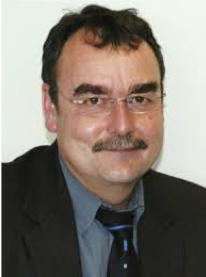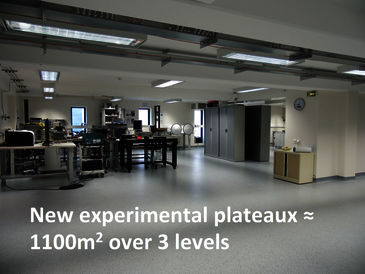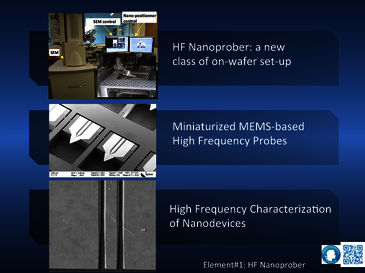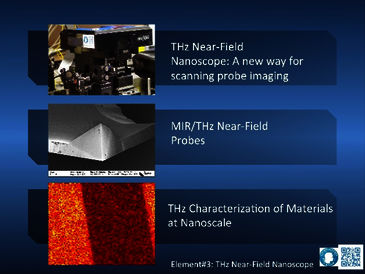Description of the organisation
UNI Lille is one of the leading science universities in France, with around 20000 students and 2975 staff members (Academic and Administrative). Research is organised around 5 Institutes and 3 Research Centres. These 8 scientific areas have developed a strong strategy with National and International authorities under its 37 key laboratories. Lille 1 possesses 5 doctoral schools. 1100 candidates of which 30% are international are registered in these doctoral schools and about 220 theses are defended per year.
The Institute of Electronics, Microelectronics and Nanotechnology (IEMN) is a public laboratory within University of Lille, CNRS, University of Valenciennes, École Centrale Lille and ISEN-Lille. The laboratory gathers 480-500 people including as permanent staff: 45 full time CNRS researchers, 114 professors and assistant professors and 68 engineers and technicians. IEMN is a strong actor as training center in the field of nanoscience with 140 PhDs students, 60 undergraduate students and 30 Postdocs.
The laboratory gathers five scientific departments:
- Materials and nanostructures ;
- Micro and nano-systems ;
- Micro nano and optoelectronics ;
- Circuits and communication systems ;
- Acoustics.
IEMN gathered five large experimental platforms:
- The ‘Micro and Nano Fabrication Center’ with 1600m2 of clean room (ISO6) including nanotechnology equipment and 250m2 dedicated for back-end process; 24 engineer permanent positions;
- The ‘Microwave Characterization Center’ and - The ‘Scanning Probe Microscopy (SPM) platform’ are gathered in new controlled (temperature, hygrometry, ultra low vibration) environmental spaces (ISO8) over 1100m2; 7 engineer permanent positions.
- The ‘Telecom’ and - The ‘ElectroMagnetic Compatibility’ platform dedicated to microwave and mm-wave systems characterization; 3 engineer permanent positions.
In 2016, 66 national projects (National Research Agency), 17 European projects (FET, Flagship Graphene, Interreg V, Marie Curie - ITN…) are on-going.
The annual scientific production is close to 250 peer-reviewed articles in Physics, Engineer research, Chemical, Biological journals (Nature, Science, APS, ACS, IEEE…).
Significant infrastructure / major items of technical equipment
The instruments, the environmental controlled space and permanent staff of the ‘Microwave Characterization Center’ and the ‘Scanning Probe Microscopy (SPM) platform’ guarantee the best conditions to achieve the project objectives.
These characterisation platforms of IEMN offers:
- numerous Microwave to THz measuring equipments (up to 750GHz VNAs*, manual and semi-automatic probe stations, HF noise and power microwave and mm-wave test-sets, near field and far field microwave measurement set-ups*, microwave and mm-wave interferometer set-ups* …) as well as
- scanning probe microscopy/spectroscopy facilities (2 SMMs*, 1 SEM dedicated to microwave/mm-wave measurements*, 1 s-SNOM operating at 10µm and in the THz, 4-probe SPM and time resolute probe-pump optical set-up, open air and UHV multi-physic AFMs, 1Kelvin/2Tesla Joule Thomson AFM …).
* main instruments used in the frame of MMAMA project.
Main contact
About the team
MMAMA project will be carried out in the ‘Micro and Nano-systems’ department and will benefit of the facilities and permanent staff of the ‘Microwave Characterization Center’ and the ‘Scanning Probe Microscopy (SPM) platform’.
As leader of WP1, IEMN will develop a homemade SMM integrated in a SEM set-up including microwave to mm-wave SMM probes and characterization techniques. In WP2, in collaboration with METAS, IEMN will contribute to SMM based measurements with coaxial tip under SEM. In WP4, IEMN will be involved, in close collaboration with Materia Nova and Adamant, to SMM analysis of reference samples dedicated to PV, batteries, ultracapacitors, advanced components and ion-implanted surfaces. In WP5, IEMN will develop a microwave free-space measurement set-up suited for in-line non-destructive testing and evaluation.
- An interferometric scanning microwave microscope and calibration method for sub-fF microwave measurements, T. Dargent, K. Haddadi, T. Lasri, N. Clément, D. Ducatteau, B. Legrand, H. Tanbakuchi, D. Théron, Rev. Sci. Instrum. 84, 12 (2013).
- Interferometric technique for scanning near-field microwave microscopy applications, BAKLI H., HADDADI K., LASRI T., Trans. Instrum. Meas. 63, 5 (2014)
- Measurement techniques for RF nanoelectronic devices : new equipment to overcome the problems of impedance and scale mismatch, HAPPY H., HADDADI K., THERON D., LASRI T., DAMBRINE G., IEEE Microw. Mag. 15, 1 (2014).
- Modeling and calibration in near-field microwave microscopy for dielectric constant and loss tangent measurement, BAKLI H., HADDADI K., LASRI T., IEEE Sens. J. 16, 12 (2016)
- Quantitative impedance characterization of sub-10 nm scale capacitors and tunnel junctions with an interferometric scanning microwave microscope, F. Wang, N. Clément, D. Ducatteau, D. Troadec, H. Tanbakuchi, B. Legrand, G. Dambrine, D. Théron, Nanotechnology Volume 25, Number 40 (2014).
- A 17 GHz molecular rectifier, J. Trasobares, D. Vuillaume, D. Theron, Nat. Commun., Volume: 7 Article Number: 12850 (2016).
Key people involved

Prof. Gilles Dambrine, (PhD 1989, Habilitated 1996, IEEE Fellow 2016), is Deputy Director of IEMN. He is author and co-author of 75 peer review articles and 112 peer-reviewed communications in IEEE conferences (5 invited in plenary session) and 14 book chapters (2900 citations ISI/Scopus, 4300 Google Scholar). He participates to H2020: ‘Flagship 'Graphene', EMPIR ’IND02 PlanarCal’ and he participated to FP5-6 & 7 Framework programs (FET), MEDEA (after CATRENE) European clusters and ESA programs whose 6 of them as WP leader. His main expertise is the characterization of semiconductors based devices in dynamic regime.
Dr. Kamel Haddadi (MSc Lille 2003, Ph.D Lille 2007) is an Associate Professor of Electronics and Electrical Engineering in the University of Lille 1. His main research interests, in the IEMN, are the development of microwave measurement techniques for microwave Non Destructive Evaluation (NDE) and for electrical nanometrology. He is in charge of microwave aspects in the frame of the French PIA Equipex Excelsior and European project EMPIR EMPIR ’IND02 PlanarCal’. He is author of ~ 80 articles in peer review international papers and conferences. He is a TPC member in various IEEE conferences.
Dr. Didier Théron received in 1998 the CNRS Bronze medal for his work on the physics and technology of power HEMTs for millimetre wave applications. In 2009, in collaboration with Keysight Technologies, he developed expertise in Scanning Microwave Microscopy coupled to RF interferometry for the investigation of aF scale capacitance on Au nanodot devices and Ferrocenealkane Thiol grafted to those Au nanodots. He participated to 80 peer-reviewed papers and 76 peer-reviewed communications in conferences (12 invited) and 2 patents.








